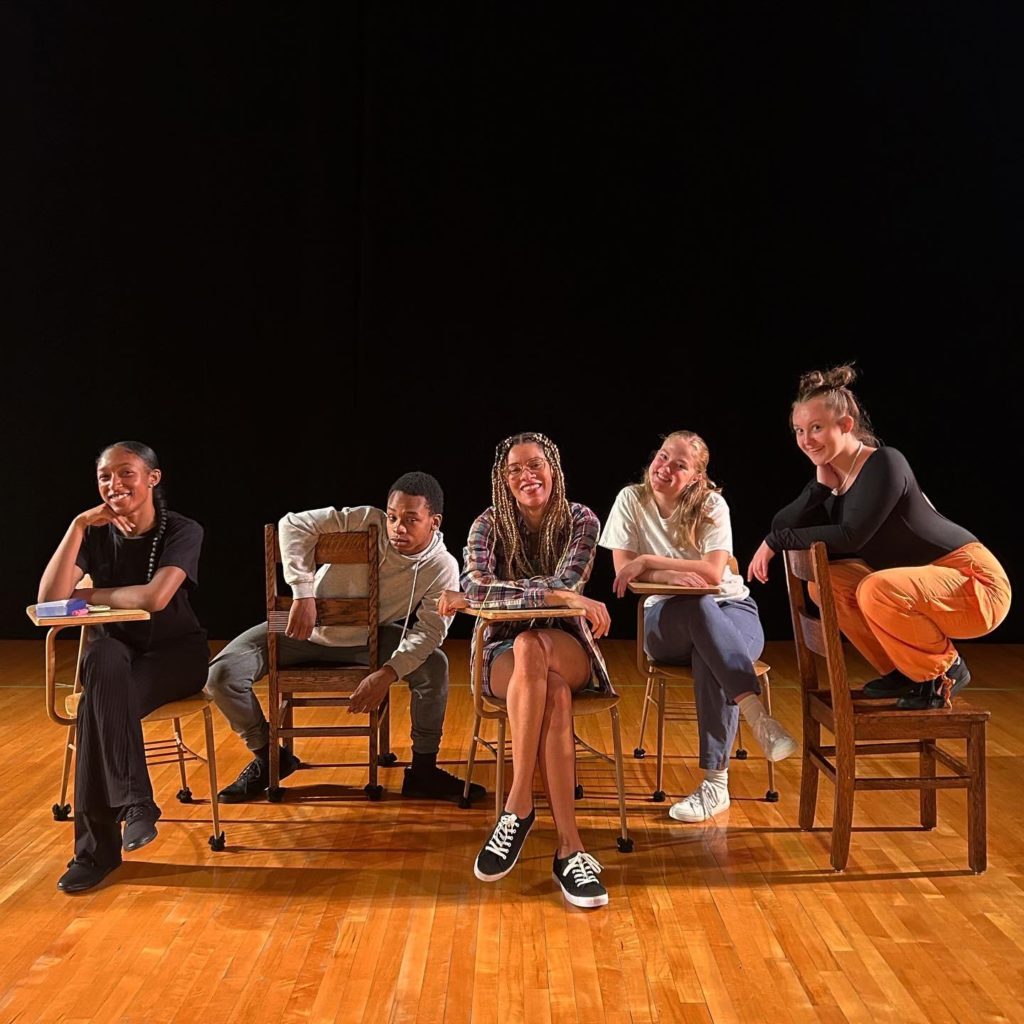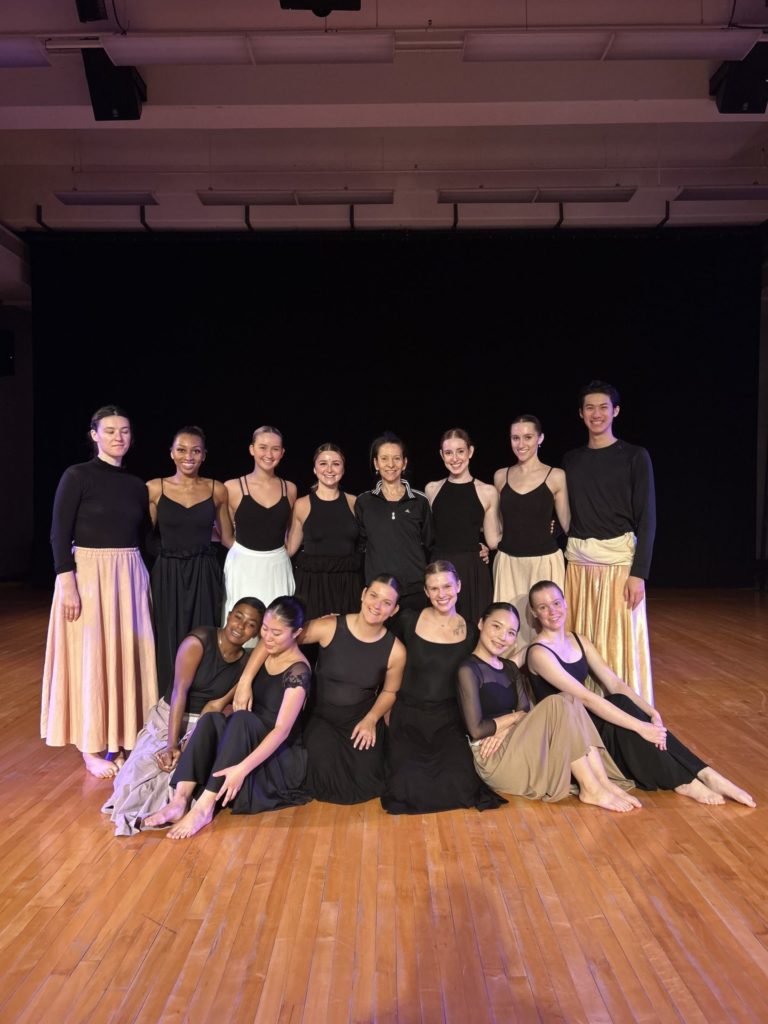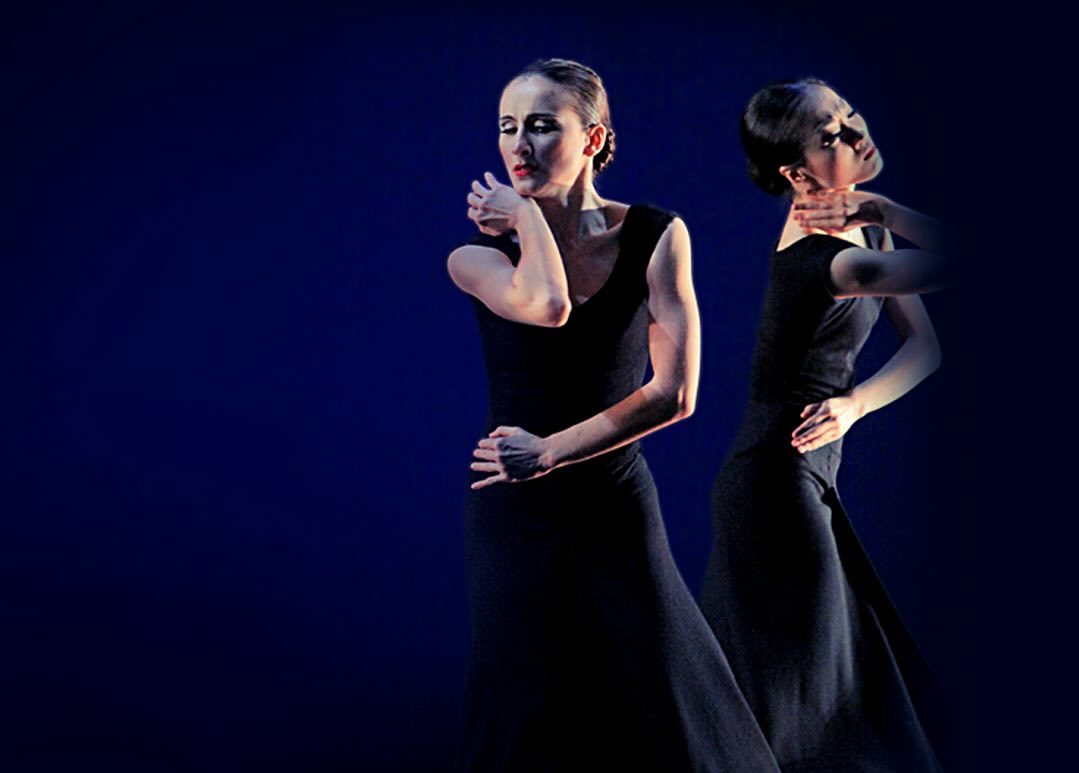October Dance, formerly November Dance, is the annual dance showcase put on by the University of Illinois’ Department of Dance as their first event of the year. As I wrote in my Five things in arts this month, this year’s October Dance features five distinct female voices. I recently corresponded with Concert Director and Head of the Department of Dance Sara Hook about the planning of this year’s performance. Hook has participated in numerous departmental concerts for the last 23 years as a performer, choreographer, and concert director. Here’s what she had to say about what makes October Dance such a success that keeps drawing people back year after year:
Some answers have been edited for length or clarity.
Smile Politely: Can you tell me about the planning and preparation for October Dance. How do you decide what to perform; how far in advance are pieces decided?
Sara Hook: We start planning the October shows as far back as a whole year! I began negotiations with the Martha Graham Dance Center in September of 2022 to get the rights to do Steps in the Street, an iconic work from 1936. One of the other pieces on the program started rehearsals at the beginning of last spring term in a course we call Choreographic Laboratory. This is a work by our new Assistant Professor, Alexandra Barbier. The other three works just started rehearsals at the end of August. There are five pieces with almost 40 dancers in total. All of the performers are undergraduate dance majors or graduate MFA candidates. We try to program works that are not only diverse in terms of aesthetic but also compatible in an evening that feels cohesive. This year’s October Dance works have everything to do with the creation of community — in celebration and ritual, in playfulness and nostalgia, or in an activation of protest. All of the works explore the importance and impact of community.

SP: What should viewers expect from this year’s October Dance?
Hook: This concert really showcases our dancers’ versatility and performance prowess. You will see Modern Dance, Contemporary Dance, Post-Modern Dance mixed with Caribbean influence, and even 1990’s social/ pop dancing. We also have a featured undergraduate composition on this program. Nawal Assougdam’s work explores Moroccan-infused dance and cultural elements. This concert is varied, powerful, meaningful, and vivid.
SP: Martha Graham’s 1936 piece, Steps in the Street is included in this year’s program. What do you think makes this work still feel relevant today?
Hook: Steps in the Street is an excerpt from a larger work called Chronicle. This work was made as a response to the experience of war: The horrors of World War II and the Spanish Civil war were on Martha Graham’s mind. Steps in the Street is meant to depict the isolation and devastation that war creates and the spirit of resilience. Martha Graham was keenly aware of the rise of fascism in Europe during this time. She had just turned down an invitation for her company to appear at the 1936 Olympics in Berlin because she would be putting the Jewish members of her company in harm’s way. Steps in the Street is widely interpreted as a protest against racism, and exclusionary politics. Unfortunately, racism and antisemitism are alive globally. We chose this work from the Graham repertory, as the Graham company celebrates its centennial, to draw connections across the centuries. We are stepping out and rising in support of people of all cultures who face the horrors of war, prejudice, and persecution. We are thinking about the movement for Black lives in America, the war in Ukraine, Armenians in Karabakh, and the victims of catastrophe such as the Maui wildfires and the earthquake in Morocco.
Steps in the Street is also a masterful display of early Modern Dance technique and composition. Graham was a pioneer of the field, and her work remains some of the most physically specific and demanding in the canon. We have also sought to contemporize the work a bit. This reconstruction includes a new orchestration — by Professor and Music Director John Toenjes — of the original orchestral score (which now includes synthesizer and guitar!). The piece was originally done with an all-female cast, but we are performing it with a gender-inclusive cast, all costumed in the original dresses designed by Marth Graham. This reconstruction was overseen by two former Martha Graham dance principal dancers, Miki Orihara and Elizabeth Auclair, who have also been teaching Graham technique and creative practice to our older students. The students have also been learning about the context surrounding the work as part of our new curriculum. It has been an incredible immersion and the students’ performance will evidence this. Their conviction and authority in the work is quite amazing.

SP: How is this year’s October Dance different from previous years?
Hook: Every production from Dance at Illinois is unique in that the combination of works always adds up to a different feel or a one-of-a-kind experience. Every generation of dancers is different, too, and each class makes their own imprint since nearly every premiere is created collaboratively.
SP: What are you most excited about with this year’s performance?
Hook: I’m excited about the ride of the whole evening. From the moment the curtain opens on Dr. Cynthia Oliver’s stunning, complex (and gorgeously costumed!) Summon. Sow. Reap. to the welcoming Moroccan-flavored tea ritual of Nawal’s Atay?, to the striking Graham work, the concert delivers a punch. After intermission comes some surprises from our resident queen of audience activation and Louisiana-native hostess with the mostest, Alexandra Barbier, and then we end with our fresh-faced first year dance majors exploding onto a stripped-down stage in Anna Sapozhnikov’s Bells for Us. We are left with a feeling of urgency, where will we drive culture forward into 2023?
SP: What do you hope the audience takes away from this performance, and what do you think brings the audience back year after year?
Hook: I hope the audiences take away something individually meaningful. These works expose all kinds of states of being and everyone will find something relatable to contemplate. I think audiences come back year after year because we are unpredictable! Our concerts always provide an opportunity to revel in the power of motion and sound, a fundamental expression of our humanity.
SP: What’s next for you and the department of Dance?
Hook: We have our annual all-student works concert coming up November 10th and 11th. It is a great chance to get an intimate view of some of our young choreographers’ works and to be closer to the action than you can be in a large theater. These shows are always full of energy and creativity. I love watching the students’ uniqueness start to burst out of them — and this show is free! Get there early to snag a seat!
October Dance
Krannert Center for the Performing Arts
500 S Goodwin Ave
Urbana
Oct 12-14
Th-Sa 7:30 p.m.
$10-$25








